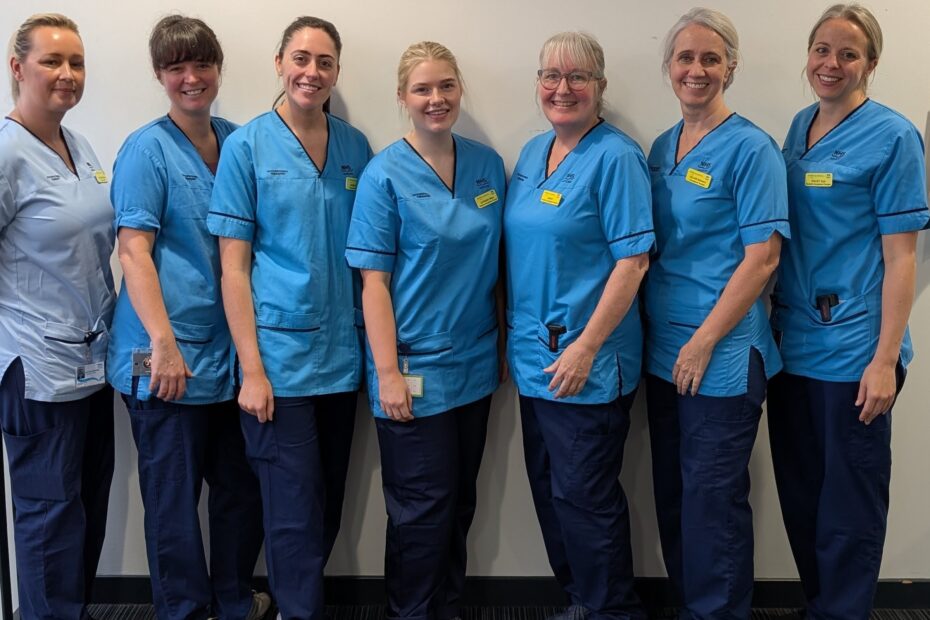
This Occupational Therapy Week (3-9 November 2025), we’re shining a spotlight on the incredible work of the Occupational Therapy (OT) team at the Royal Hospital for Children, Glasgow.
Rebecca Ironside, Specialist Occupational Therapist at the RHC said:
“From intensive care to orthopaedics, our team of therapists support our patients across a vast range of conditions and injuries, helping them build the skills they need to thrive in everyday life. Whether it’s learning to use cutlery, playing with friends, or returning to school after surgery, our OT team empowers young patients to be as independent, confident, and engaged as possible. No two days are the same and I am thankful to be part of a team that is making an impact on changing lives.”
Not quite sure what occupational therapy is? The wonderful team over at the RHC have answered a few questions around their work as well as busting some common myths.
- What is occupational Therapy?
Occupational Therapy (OT) with children focuses on helping them develop the skills they need to grow, learn, play, and participate in everyday life. These “occupations” might include getting dressed, playing with friends, using cutlery or concentrating in class.
The aim is always to empower children to be as independent, confident, and engaged as possible in the activities that matter most to them.
- What does a typical day look like for an occupational therapist at the Royal Hospital for Children?
Our team works across the entire hospital, supporting both inpatients and outpatients. On any given day, we might be involved in a range of clinical areas including intensive care, major trauma, neurology, orthopaedics, oncology, and many more.
We start our day by checking for new referrals and allocating them to the most appropriate team member.
Our work is incredibly varied. Team members carry out assessments and treatment sessions with patients of all ages. These might include:
- A developmental session in a patient’s room or sensory room
- An upper limb session using games like Connect 4
- A seating assessment with the aim of providing specialist seating for a child to access play activities.
- Assessing toileting equipment needs following orthopaedic surgery
No two days are the same, and we’re proud to play a vital role in supporting patients across diverse pathways.
- How many occupations do you experience in a day?
Occupations mean different things to different people, and what’s meaningful to one person might not hold the same value for another. But if you think about each task you do throughout the day these are likely your occupations.
From making breakfast, going to the toilet, and getting dressed, to reading a book, watching TV, or spending time with friends and family each activity contributes to your daily routine and wellbeing.
The number of occupations we engage in is infinite. They shape who we are, how we live, and what matters most to us.
- Are there common ‘myths’ about OT that you’d like to bust?
Occupational Therapists just provide equipment.
While Occupational Therapists (OTs) can provide equipment, like seating or toileting aids, that’s only one part of what we do.
OTs focus on helping children engage in meaningful everyday activities. Equipment is only recommended when it supports a child’s ability to participate in tasks.
OTs and physios are the same thing.
While both support physical development, OT focuses more on helping children participate in meaningful daily activities—like feeding, dressing, or school tasks—through physical, emotional, and sensory strategies.
I get mixed up between occupational therapy and occupational health.
OT is about helping people develop the skills they need for everyday life. The focus is on supporting independence and participation in daily activities. Occupational Health, on the other hand, is a field that supports adults in the workplace to help them stay healthy, manage injuries or return to work after illness.
OTs only work with the child.
Although a physical assessment will be carried out with the child, as occupational therapists we value family involvement in our sessions. We also work closely with caregivers, nurses and other members of the multidisciplinary team to provide strategies and supporting discharge.
OTs only work in clinics and hospitals.
We are the team that work in the hospital, but we link regularly with our community, CAMHS and social work OT colleagues to further support patients in their own environments. Also, OTs can really work anywhere including schools, nurseries, patients’ homes and, for adults, prisons, employment services and lots of different clinical areas.


